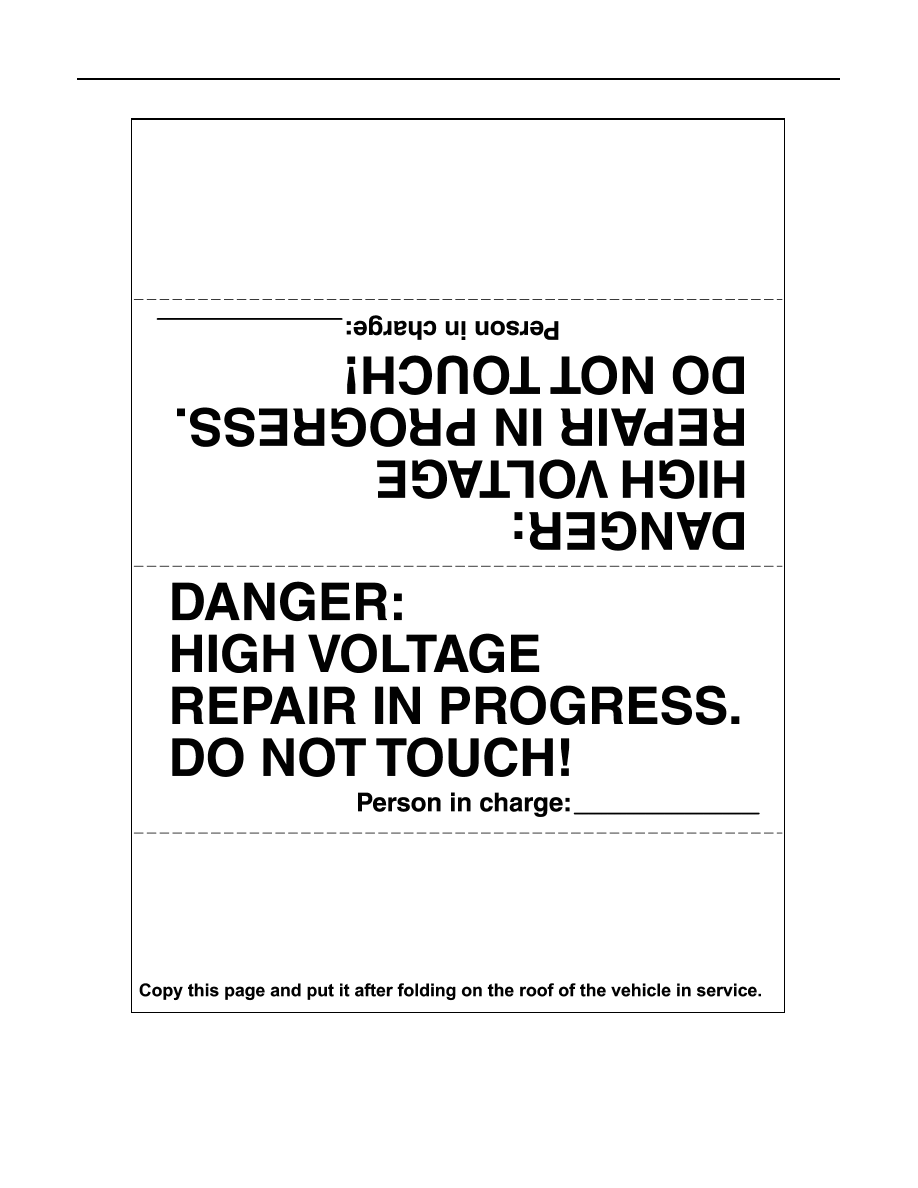Nissan Leaf. Manual - part 706

GI-36
< PRECAUTION >
CAUTIONS AS TO HIGH VOLTAGE
To call the attention of other workers, indicate “High voltage work in progress. Do not touch!” on vehicles
where work is being performed on the high voltage systems.
JSAIA1600GB